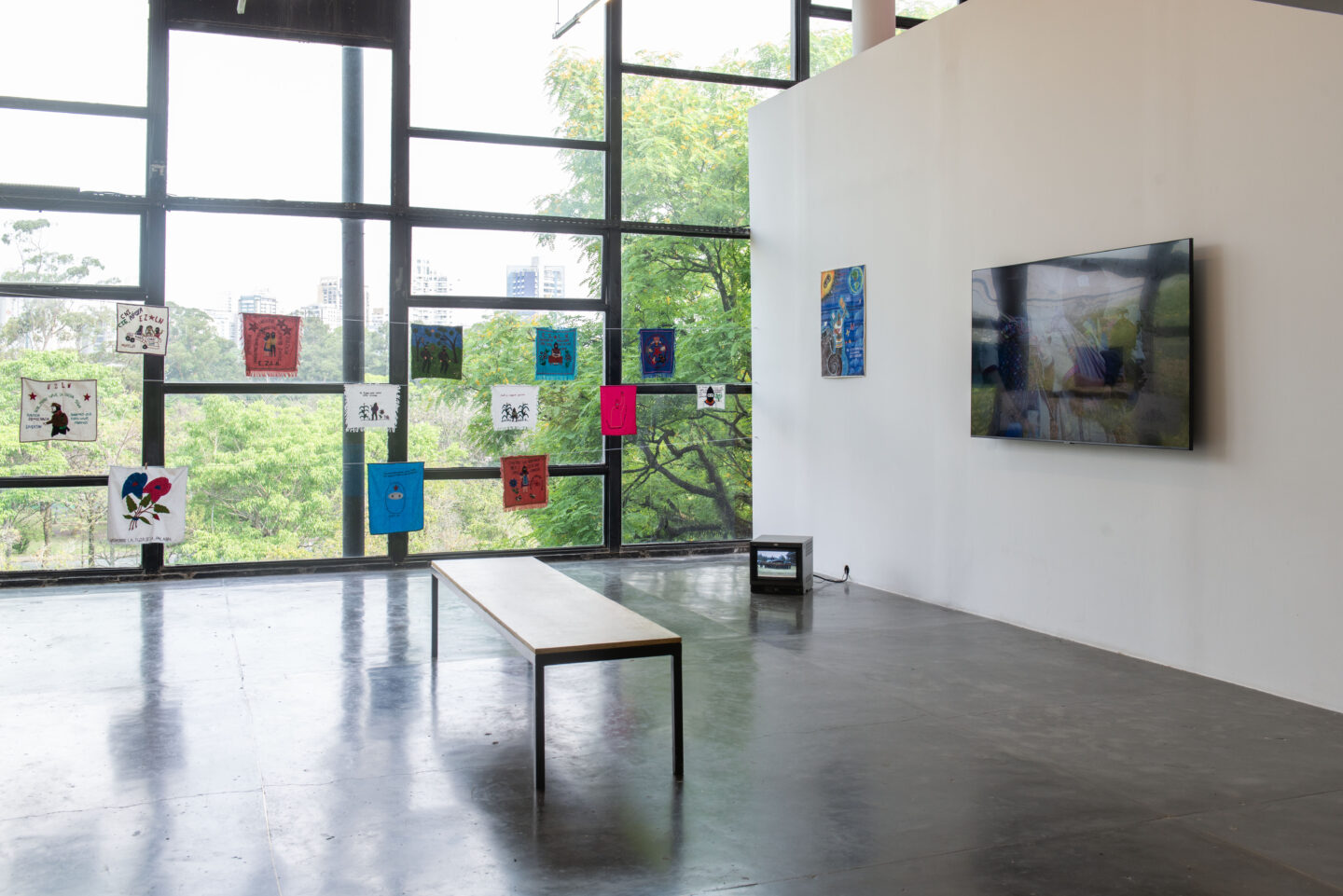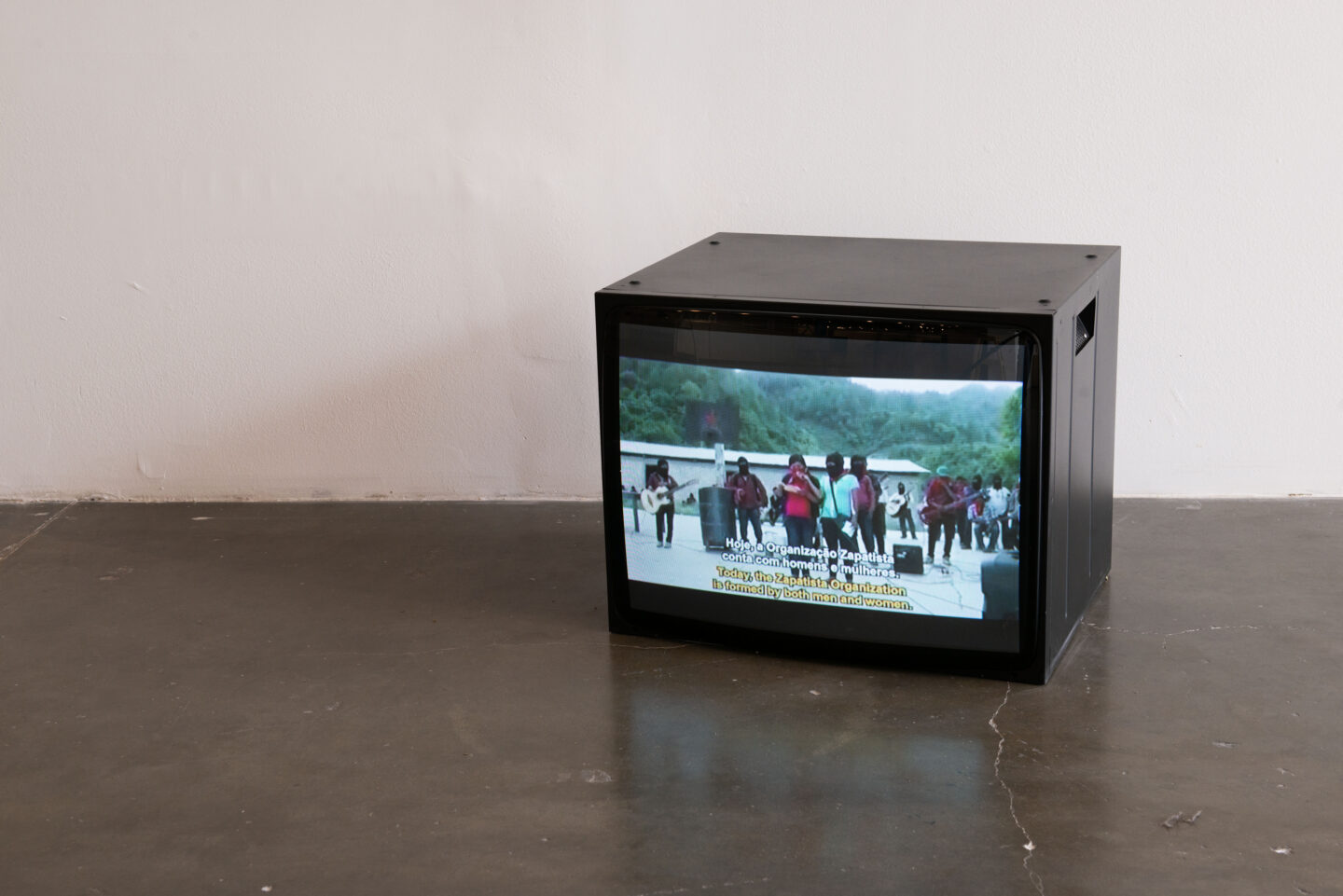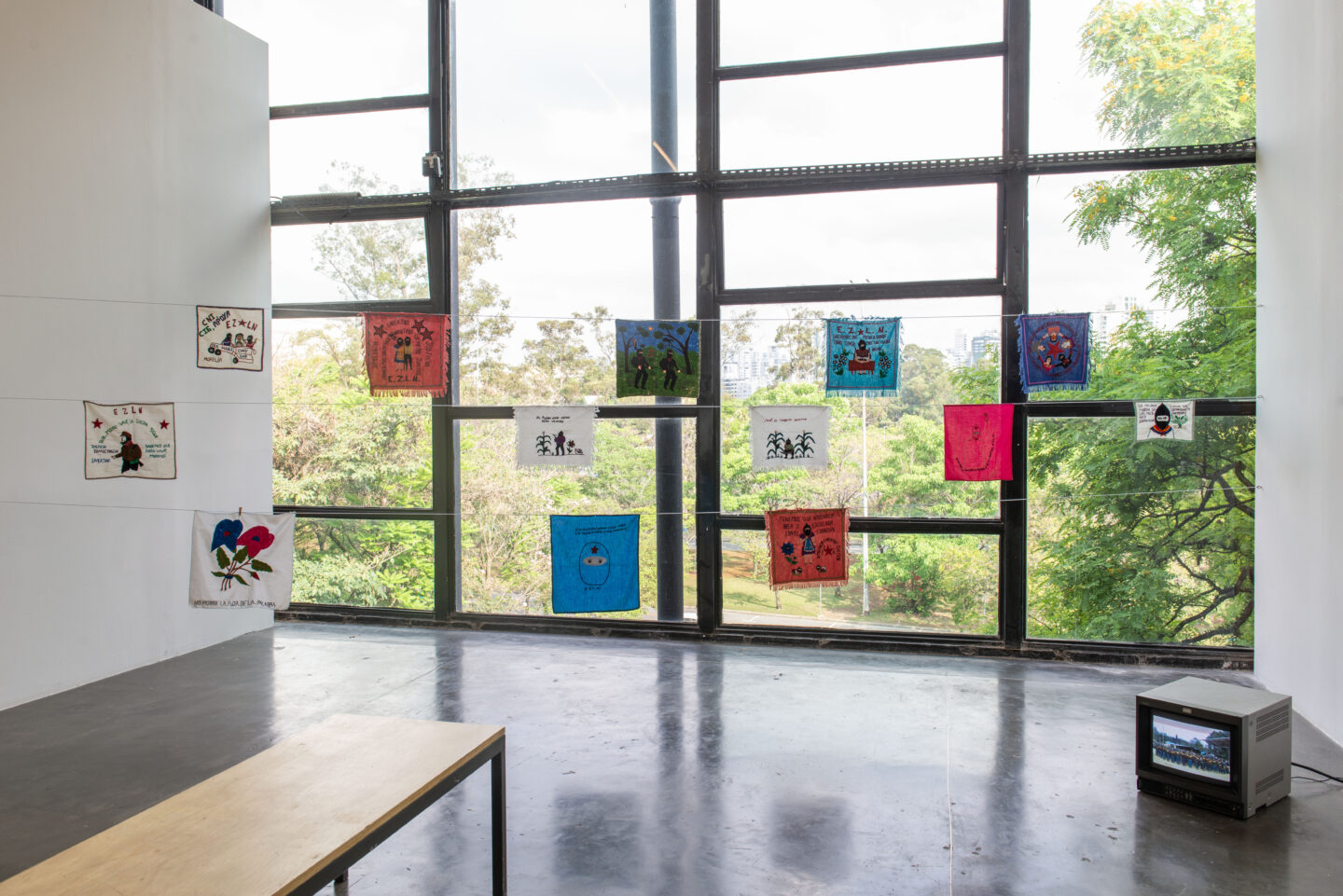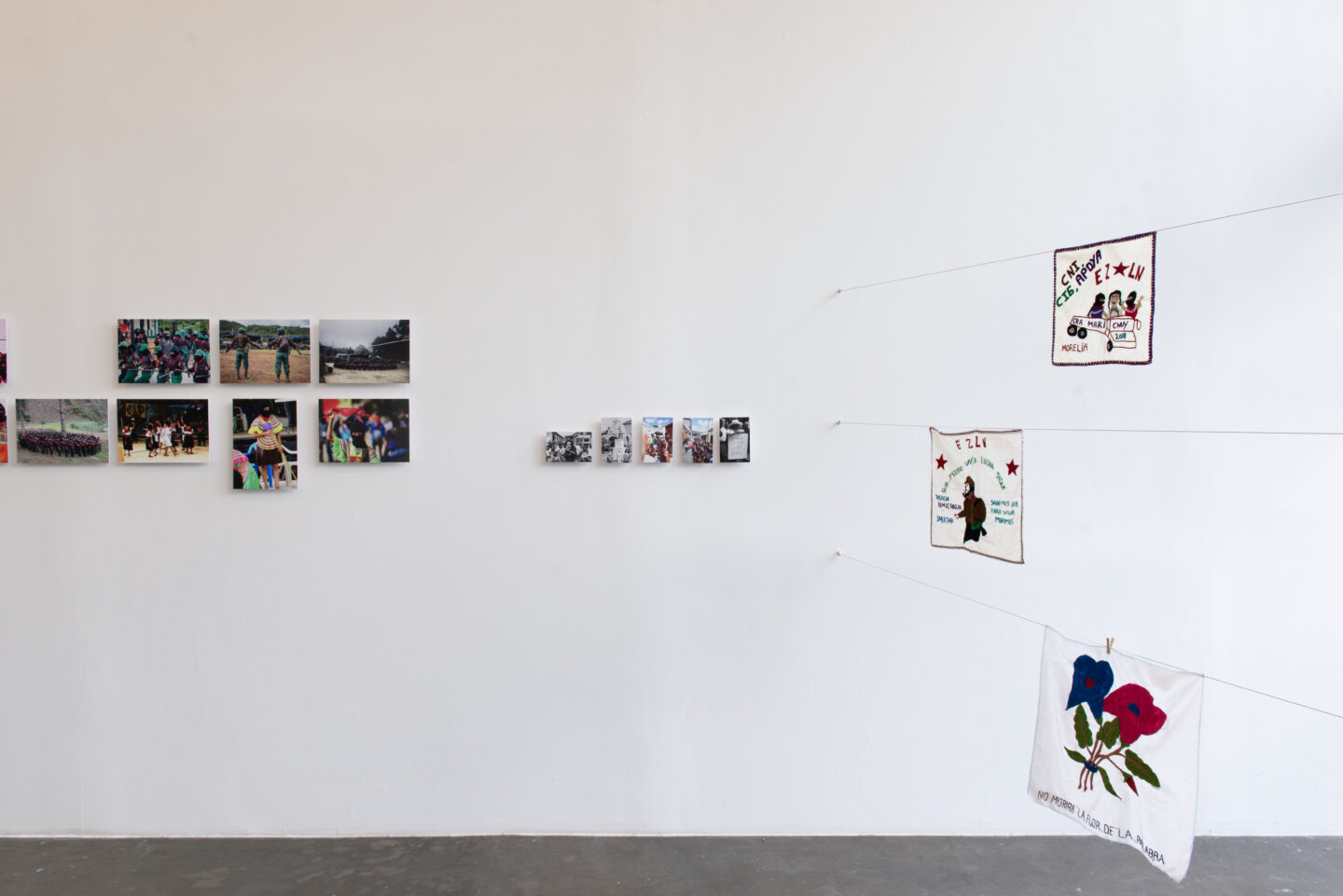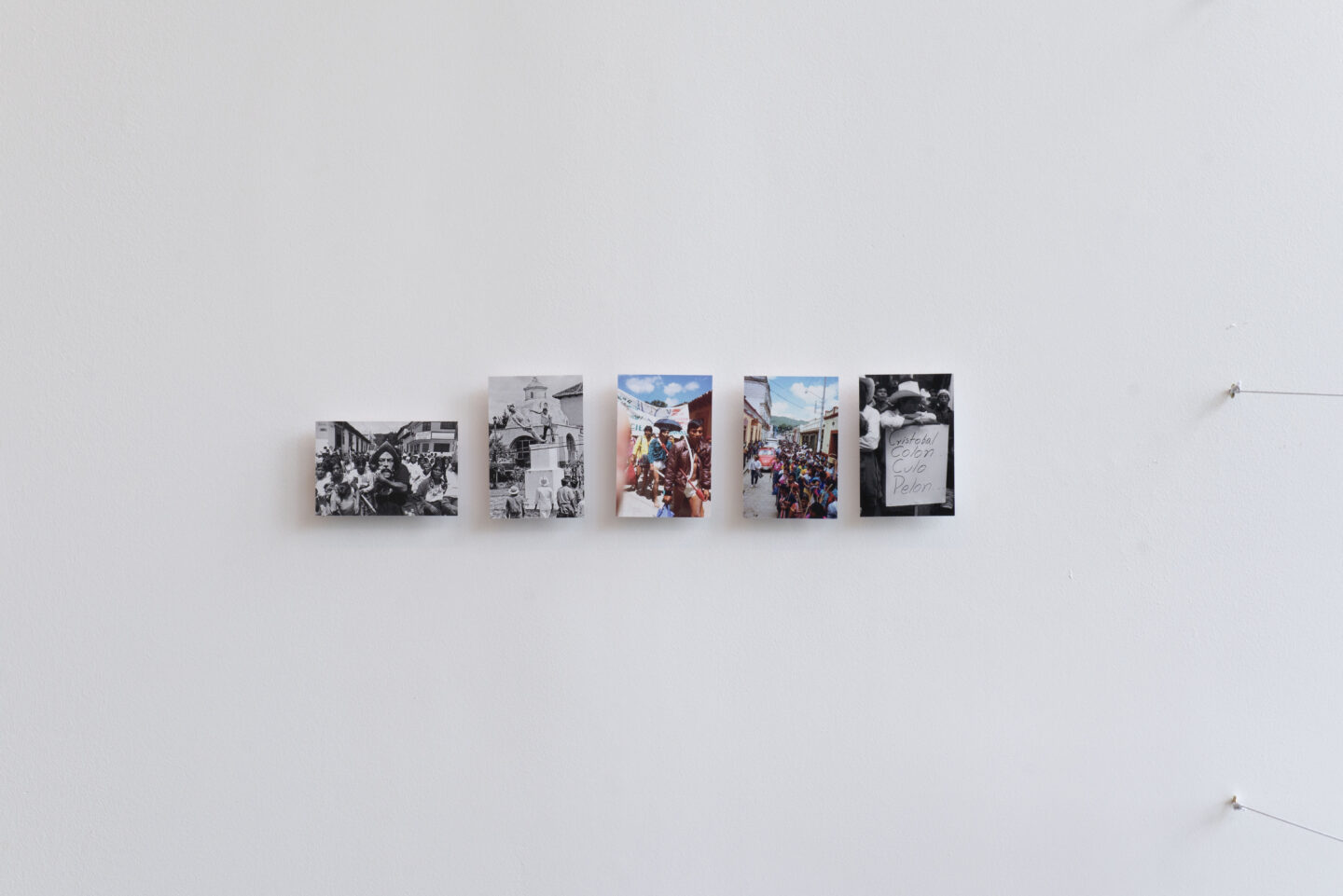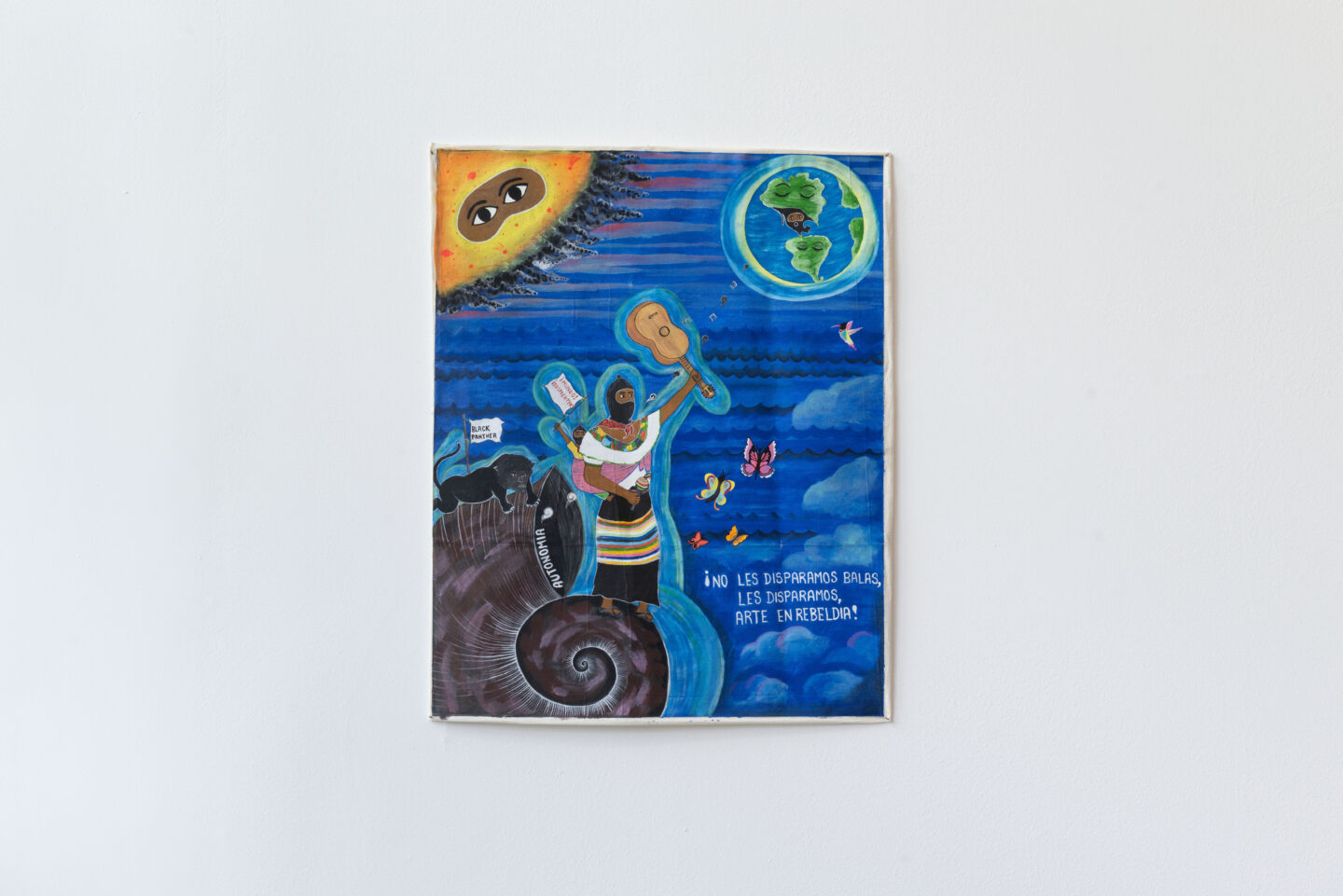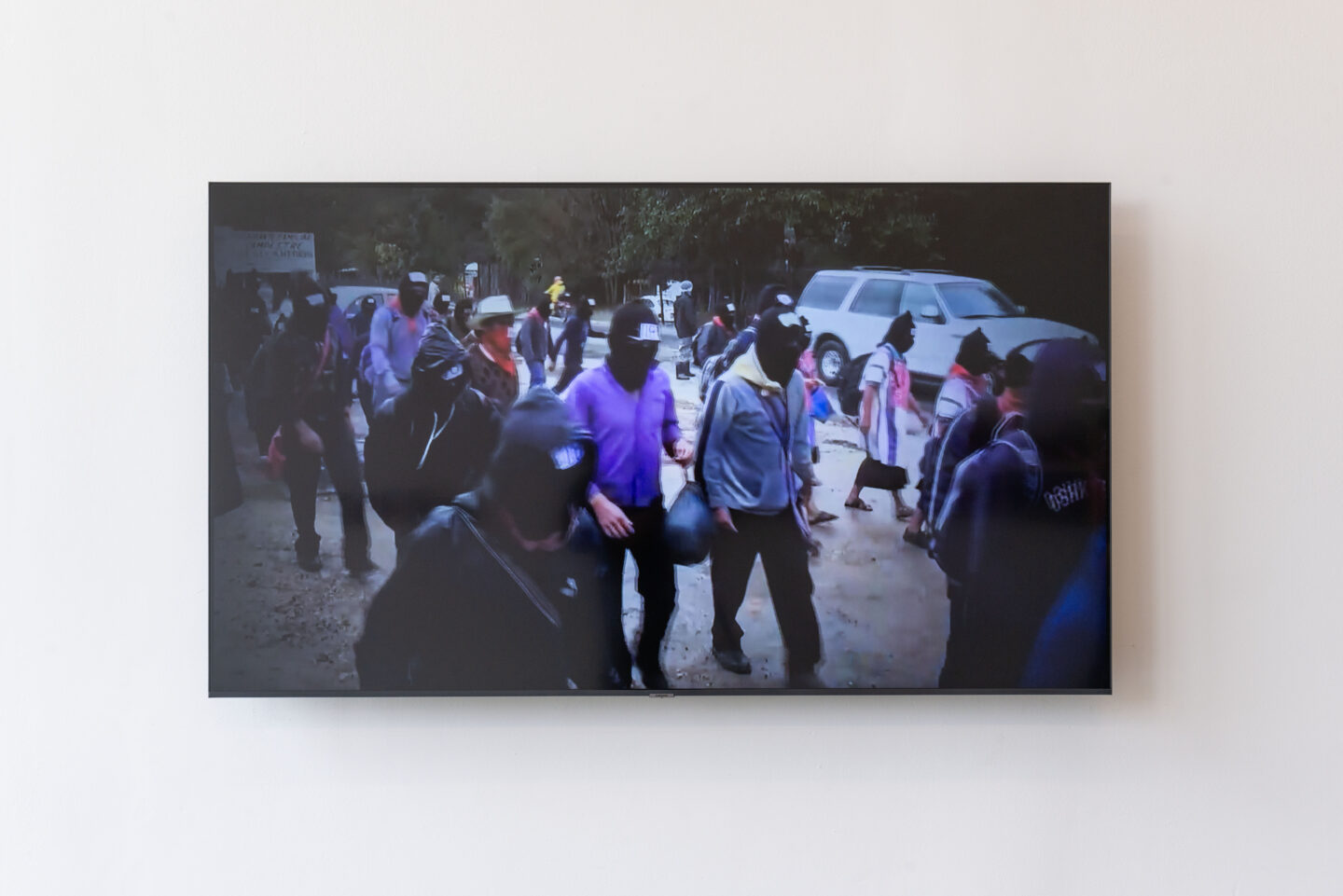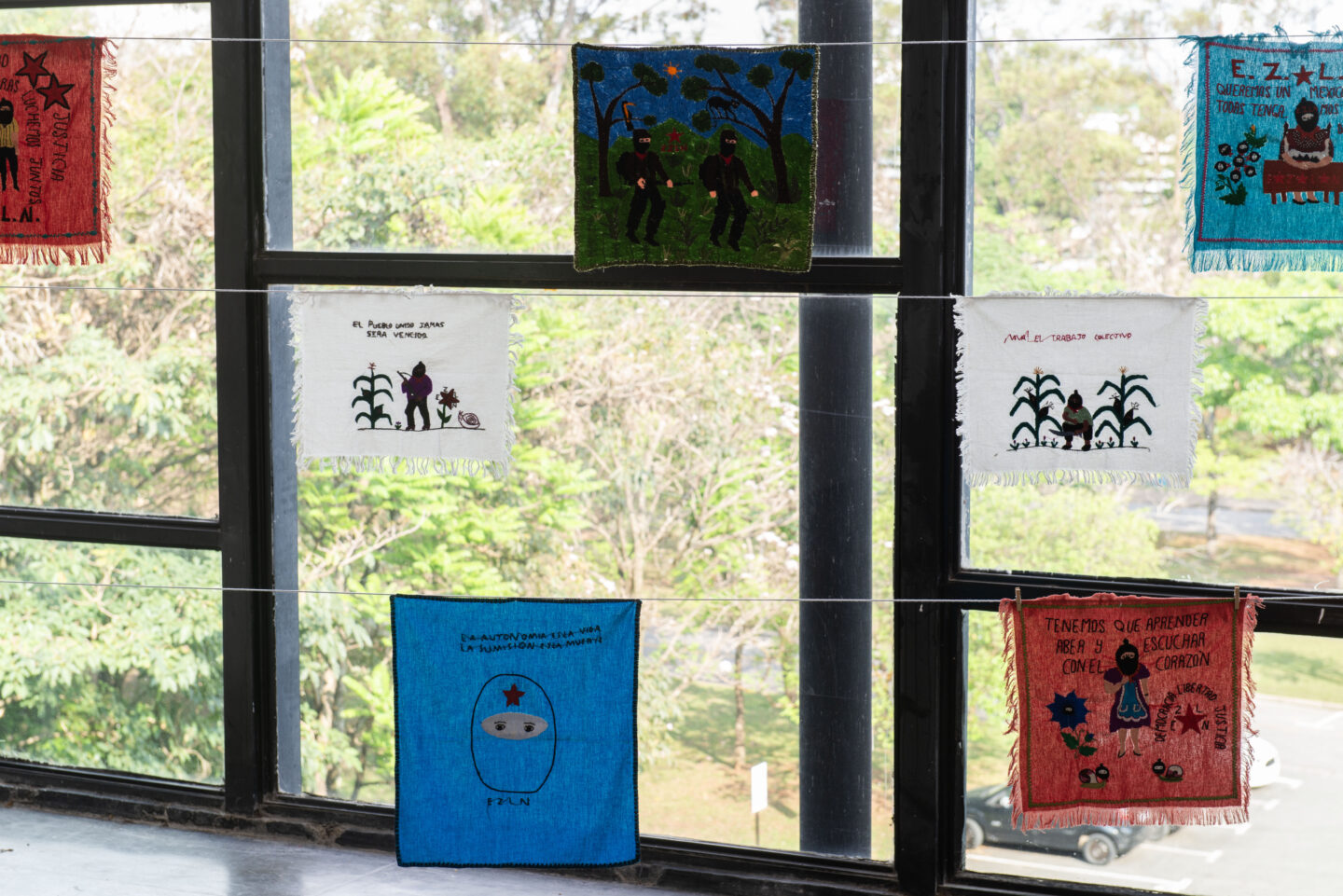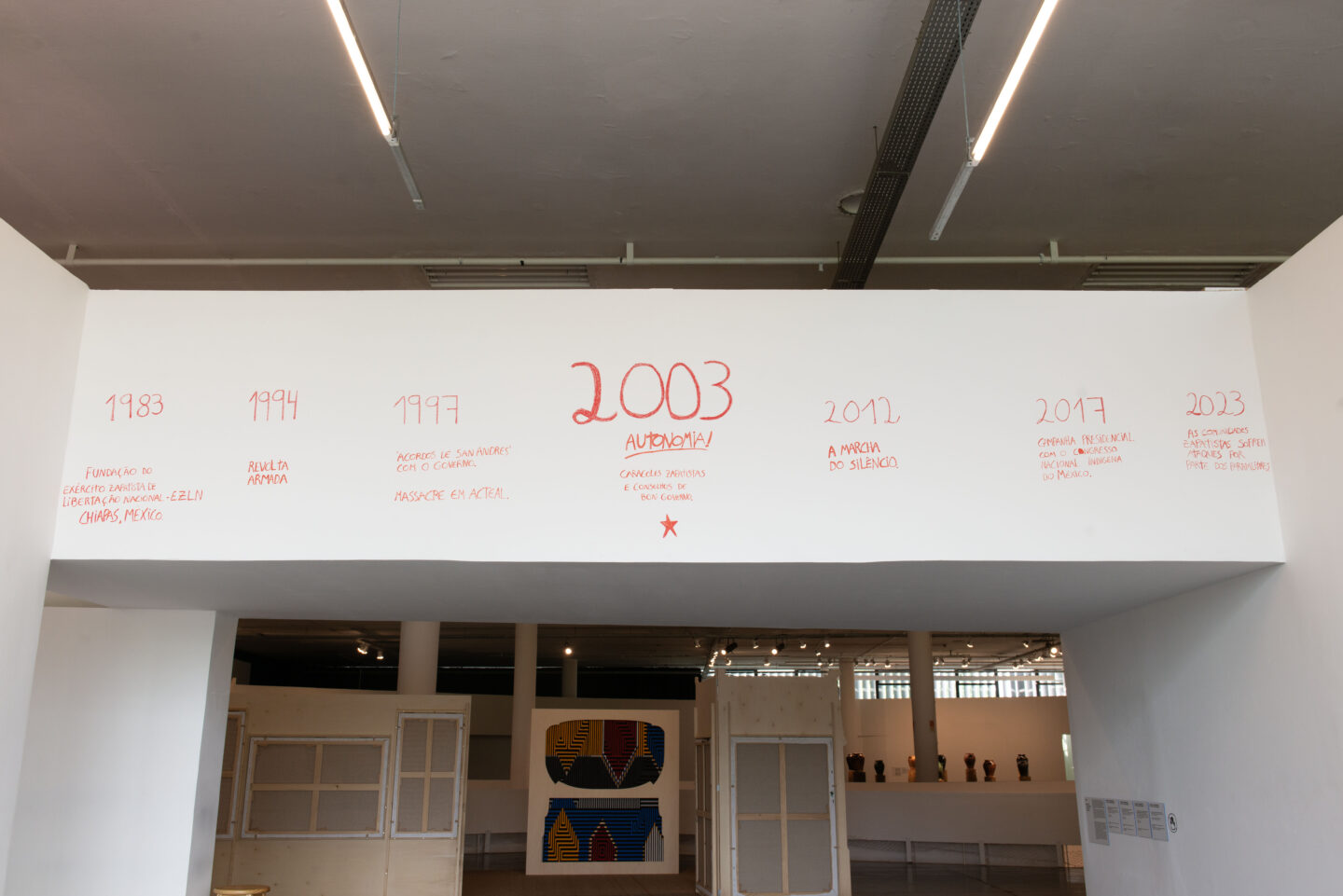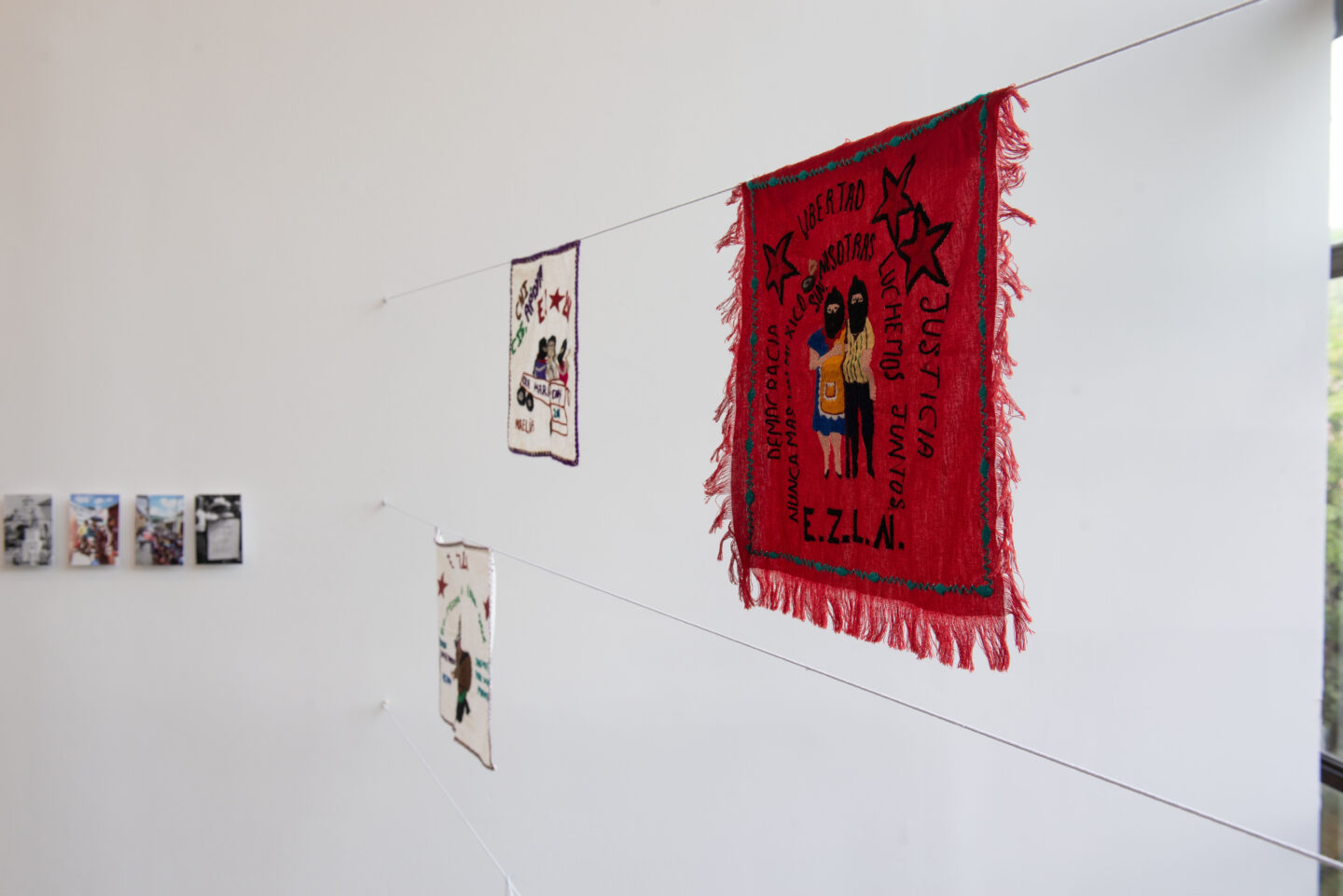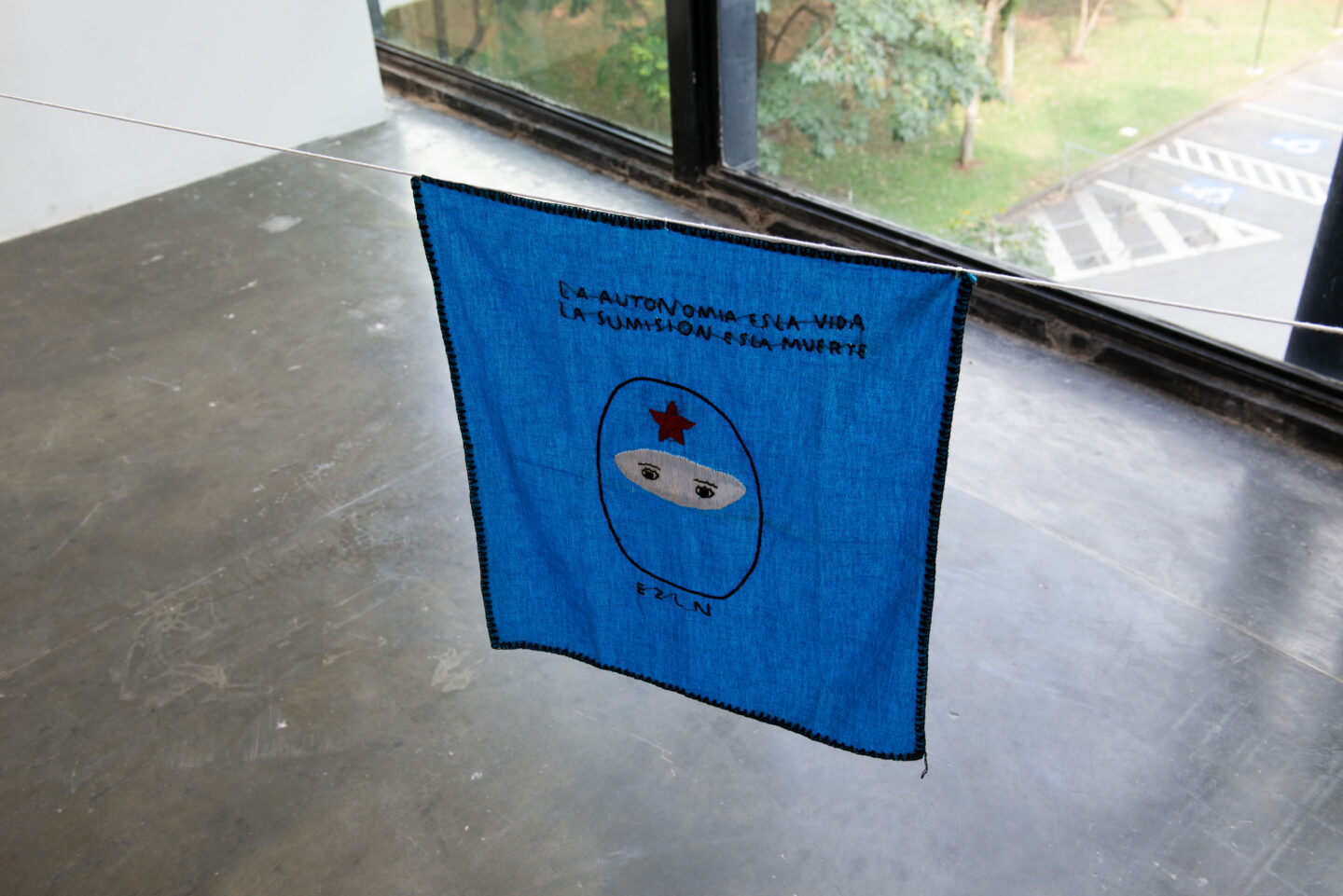
Grupo de Investigación en Arte y Política (GIAP)
The Grupo de Investigación en Arte y Política (GIAP) [Art and Politics Research Group] was founded in 2013 in Mexico by Chilean theorist and curator Natalia Arcos Salvo and Italian sociologist Alessandro Zagato. It produces publications, exhibitions, and lectures on aesthetics and autonomy, and since 2017 it also organizes residencies for artists and academics in Chiapas.
The group’s focus is the poetics that arise from social movements with Indigenous roots. The militant research has focused on the devices that constitute the aesthetic deployment of the Zapatista Army of National Liberation, the EZLN, a corpus that is interpreted as a central element not only of the Zapatista ethics and political structure, but also of the autonomous praxis of its communities. The EZLN is an Indigenous guerrilla movement with a high global impact, and in deep consonance with ancestral uses and customs it defines communally the originality that distinguishes it: spokesmanship, communiqués, clothing, actions, words, and works of art configure an imagery that works as a weapon of mass seduction.
For the Zapatistas, aesthetics and poetics play an organic role within the revolutionary politics of the movement. A fantastic example of this fusion is the great mass performance that took place on December 21, 2012, in which the Zapatistas mobilized 45,000 of their members, occupying by surprise and peacefully the same cities in Chiapas that they had taken by force in 1994. This staged event marked the reappearance of the EZLN in the media sphere,¹ with the intention of showing us the broad definition of their autonomy. This happened on the same day that was proclaimed by the media as the day of the “end of the world,” according to the Mayan calendar. But with this choreography, the Zapatistas announced at that moment the beginning of a new era for the oppressed peoples.²
GIAP has also brought for the first time, both to Brazil and South America, other Zapatista arts that narrate their processes of resistance and disseminate the practice of Autonomy, centered around the Caracoles, the Good-Government Councils, and the construction of this other possible world: embroidery, painting, dances, and militia actions. Because up there in the mountains of the Mexican Southeast, whales have been dancing for a long time.³
natalia arcos salvo
translated from Spanish by ana laura borro
1. The Zapatistas had been in media silence since 2008, away from cameras and microphones, establishing the foundations of autonomous Good Government.
2. The March of Silence had no speeches or proclamations. Only the day after a communiqué was released, in the form of a poem: did you hear it? / It is the sound of their world crumbling. / It is the sound of our world resurging./ The day that was day, was actually night. / And night shall be the day that will be day. / democracy! / freedom! / justice!
3. Zapatista dance festival press release, Jan. 2017. Available at: enlacezapatista.ezln.org. mx/2019/12/15/baila-una-ballena/.
- Vista da instalação de Grupo de Investigación en Arte y Política (GIAP), na 35ª Bienal de São Paulo – coreografias do impossível © Levi Fanan / Fundação Bienal de São Paulo
- Vista da instalação de Grupo de Investigación en Arte y Política (GIAP), na 35ª Bienal de São Paulo – coreografias do impossível © Levi Fanan / Fundação Bienal de São Paulo
- Vista de obra de Grupo de Investigación en Arte y Política (GIAP), na 35ª Bienal de São Paulo – coreografias do impossível © Levi Fanan / Fundação Bienal de São Paulo
- Vista da instalação de Grupo de Investigación en Arte y Política (GIAP), na 35ª Bienal de São Paulo – coreografias do impossível © Levi Fanan / Fundação Bienal de São Paulo
- Vista de obras de Grupo de Investigación en Arte y Política (GIAP), na 35ª Bienal de São Paulo – coreografias do impossível © Levi Fanan / Fundação Bienal de São Paulo
- Vista da instalação de Grupo de Investigación en Arte y Política (GIAP) na 35ª Bienal de São Paulo – coreografias do impossível © Levi Fanan / Fundação Bienal de São Paulo
- Vista de obras de Grupo de Investigación en Arte y Política (GIAP), na 35ª Bienal de São Paulo – coreografias do impossível © Levi Fanan / Fundação Bienal de São Paulo
- Vista de obra de Grupo de Investigación en Arte y Política (GIAP), na 35ª Bienal de São Paulo – coreografias do impossível © Levi Fanan / Fundação Bienal de São Paulo
- Vista da instalação de Grupo de Investigación en Arte y Política (GIAP), na 35ª Bienal de São Paulo – coreografias do impossível © Levi Fanan / Fundação Bienal de São Paulo
- Vista de obra de Grupo de Investigación en Arte y Política (GIAP), na 35ª Bienal de São Paulo – coreografias do impossível © Levi Fanan / Fundação Bienal de São Paulo
- Vista de obra de Grupo de Investigación en Arte y Política (GIAP), na 35ª Bienal de São Paulo – coreografias do impossível © Levi Fanan / Fundação Bienal de São Paulo
- Vista de obras de Grupo de Investigación en Arte y Política (GIAP), na 35ª Bienal de São Paulo – coreografias do impossível © Levi Fanan / Fundação Bienal de São Paulo
- Vista da instalação de Grupo de Investigación en Arte y Política (GIAP), na 35ª Bienal de São Paulo – coreografias do impossível © Levi Fanan / Fundação Bienal de São Paulo
- Vista de obras de Grupo de Investigación en Arte y Política (GIAP), na 35ª Bienal de São Paulo – coreografias do impossível © Levi Fanan / Fundação Bienal de São Paulo
- Vista de obras de Grupo de Investigación en Arte y Política (GIAP), na 35ª Bienal de São Paulo – coreografias do impossível © Levi Fanan / Fundação Bienal de São Paulo
- Vista de obra de Grupo de Investigación en Arte y Política (GIAP), na 35ª Bienal de São Paulo – coreografias do impossível © Levi Fanan / Fundação Bienal de São Paulo
- Vista de obra de Grupo de Investigación en Arte y Política (GIAP), na 35ª Bienal de São Paulo – coreografias do impossível © Levi Fanan / Fundação Bienal de São Paulo
GIAP (Grupo de Investigación en Arte y Política) (Mexico, 2013) was founded by Alessandro Zagato, an Italian sociologist, and Natalia Arcos, a Chilean art theorist. Working together, they have engaged in a range of activities including writing, presentations, exhibitions, and research related to Aesthetics and Autonomy. In addition, GIAP has been organizing residencies for artists and academics in Chiapas since 2017. Their primary interest lies in investigating the significance of poetic expressions that emerge within social movements, with a particular emphasis on those rooted in Indigenous communities.

 Português
Português
